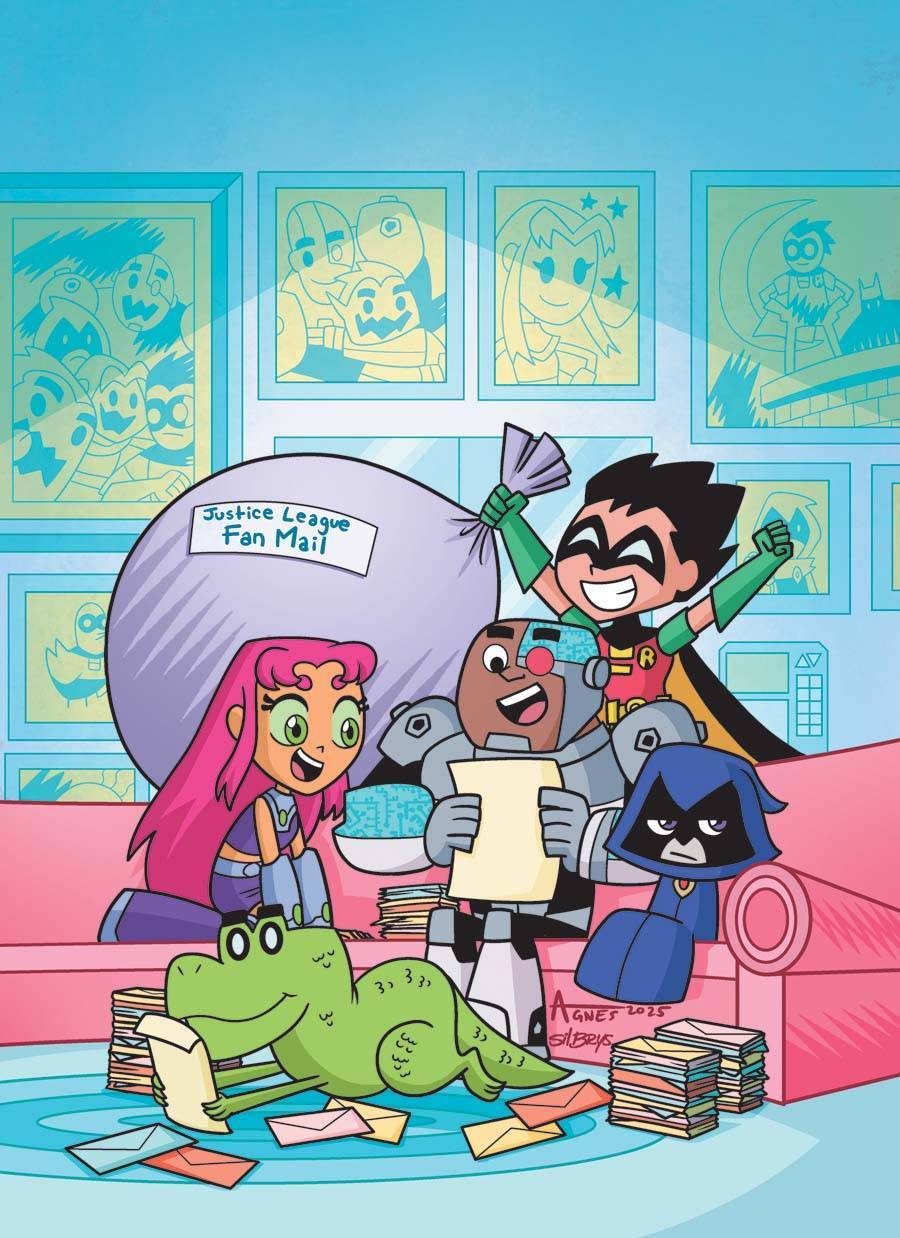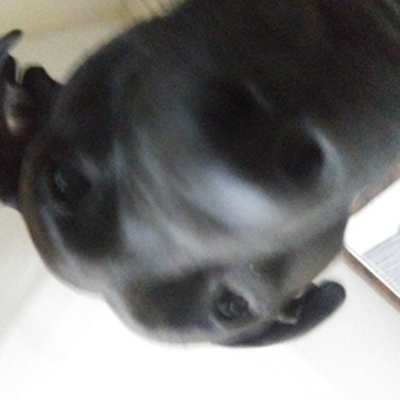
Picture this: a team of young superheroes blasts through walls, turns into animals for laughs, and argues o...
Related Blogs
Teen titans go
16 minutes, 26 seconds
-0 Views 0 Comments 0 Likes 0 Reviews

Teen Titans Go!: A Fun Dive into the Animated Superhero Phenomenon
Picture this: a team of young superheroes blasts through walls, turns into animals for laughs, and argues over pizza toppings while saving the day. That's the wild energy of Teen Titans Go!, a show that flips classic comic book heroes into comedy gold. It grabs kids with its bright colors and slapstick fun, while pulling in grown-ups who grew up on the originals. Since its start in 2013, Teen Titans Go! has racked up millions of fans, spawning movies, toys, and endless memes. What makes this series pop? It mixes heart-pounding action with everyday teen drama in a way no other superhero cartoon does.
At its core, Teen Titans Go! follows Robin, Starfire, Beast Boy, Cyborg, and Raven as they fight bad guys in Jump City. But forget serious plots—these Titans spend half their time on goofy side quests, like building the ultimate sandwich or pranking each other. The show spins off from the 2003 Teen Titans animated series, which leaned more on epic battles and deep stories. That earlier version set the stage with its mix of anime style and DC comics lore, but Teen Titans Go! amps up the jokes to keep things light and relatable.
In this article, we'll jump into the show's history, from its roots to big changes over the years. You'll meet the quirky characters who make it shine, and we'll spotlight some top episodes that fans can't get enough of. Plus, we'll look at how Teen Titans Go! shaped kids' TV and built a huge community. Stick around—you might find your next binge-watch list.
The Origins and Evolution of Teen Titans Go
Teen Titans Go! didn't just appear out of nowhere. It grew from the rich world of DC Comics, where the Teen Titans first teamed up in the 1960s as sidekicks to bigger heroes like Batman. The 2003 series brought them to TV with darker tones and real stakes, but creators wanted something fresh. By 2013, the team at Warner Bros. Animation decided to go all-in on humor, turning potential blockbusters into laugh-out-loud shorts.
From Original Teen Titans to Go! Style
The 2003 Teen Titans hooked viewers with intense fights against villains like Slade and emotional growth for the team. It ran for five seasons and mixed action with teen issues, like identity and loss. Then came Teen Titans Go!, which premiered on Cartoon Network in April 2013. Michael Jelenic and Aaron Horvath, the show's creators, aimed for a parody vibe. They told interviews they drew from their love of the comics but wanted to show heroes as normal kids who slack off. This shift let the series poke fun at superhero tropes, like endless training montages that end in chaos.
Fans noticed the change right away. Where the original had brooding moments, Go! fills screens with bright, bouncy animation. Jelenic and Horvath based it on comic shorts from the '80s, keeping the core team intact. The result? A show that feels like hanging out with friends who happen to have powers.
Production Highlights and Network Premiere
Warner Bros. Animation handled the visuals, using a clean, expressive style that nods to classic cartoons. Each episode clocks in at about 11 minutes, perfect for quick laughs during after-school slots. Cartoon Network launched it as part of their lineup, and it hit big fast—renewed for a second season before the first even wrapped.
The team cranked out over 300 episodes across seven seasons by 2022. They mixed in musical numbers and pop culture nods to keep it fresh. Horvath once shared in a panel that they tested early cuts with kids, tweaking jokes based on real giggles. This hands-on approach helped Teen Titans Go! become a staple, airing in over 100 countries.
Key Differences from the Original Series
Action drove the 2003 show, with long battles and villain backstories that built tension. Teen Titans Go! flips that script—fights often turn into dances or food fights. Take the early episode "Legs," where Cyborg deals with robot legs in a silly way, unlike the original's tech-focused drama.
Characters act more cartoonish here. Robin's bossy side gets exaggerated for comedy, while Raven's gloom hides sweet moments. The original explored trauma, like Beast Boy's family loss; Go! uses it for quick gags but adds warmth. This lighter touch makes the show accessible, yet it honors the roots without copying them beat for beat.
Iconic Characters in Teen Titans Go
The heart of Teen Titans Go! beats through its heroes and foes, each dialed up for maximum fun. You root for them because they feel real—flawed, funny, and fierce. Voice actors bring them to life with spot-on delivery, making every line pop. Whether you're new or a longtime fan, these profiles show why fans search for "Teen Titans Go characters" so often.
The Core Teen Titans Team
Robin leads with a mix of smarts and stubbornness. He's always planning, but his crush on Starfire leads to hilarious mishaps. Scott Menville voices him, capturing that eager teen energy from the comics.
Starfire bursts with joy and alien weirdness. Her innocent takes on Earth customs, like calling hot dogs "feet tubes," crack everyone up. Hynden Walch gives her a bubbly tone that lights up scenes.
Beast Boy shapes shifts into animals for pranks and saves. His vegan jokes and video game obsessions make him the ultimate slacker hero. Greg Cipes nails the laid-back vibe, turning green in more ways than one.
Cyborg blends man and machine, geeking out over gadgets and burgers. His half-robot body sparks wild inventions, often backfiring. Khary Payton delivers booming laughs that fit his size.
Raven keeps things grounded with her sarcasm and magic. Daughter of a demon, she fights dark urges but loves teen pop. Tara Strong's deadpan style makes her quips gold—fans adore her "azars" chants.
Memorable Villains and Supporting Cast
Slade, aka Deathstroke, trades menace for mockery in Go!. He pops up in masks and schemes that flop comically, like in episodes where he just wants cake. This twist keeps him scary yet silly.
Brother Blood runs a cult with tech twists, but his plans unravel in team-up fails. The H.I.V.E. Five, a group of young baddies, act like rival teens—stealing snacks more than cities. Guests like the Doom Patrol add family drama with over-the-top fights.
These villains fit the slapstick mold. They scheme big but trip over their egos, mirroring the Titans' own mess-ups. It creates a world where good and evil blur into fun rivalries.
Character Development Through Seasons
Over time, friendships deepen in subtle ways. Robin learns to chill, sharing spotlights in episodes focused on his mask obsession. Starfire's confidence grows through cultural clashes that end in hugs.
Beast Boy and Cyborg's bro bond shines in gaming marathons, teaching loyalty amid laughs. Raven opens up, balancing her powers with girl talk. Seasons build these arcs slowly—season three's team trips highlight trust, without heavy drama.
Solo stories let each shine, like Cyborg's family quests. This growth keeps viewers coming back, searching for "Teen Titans Go character arcs" to relive the changes.
Best Episodes and Story Arcs
Teen Titans Go! packs punchy stories into short bursts, blending laughs with heart. Fans rave about episodes that nail teamwork or go full absurd. If you're hunting "best Teen Titans Go episodes," start here—these picks mix comedy, action, and feels. Stream them on Max for easy access, and pair with popcorn for the full ride.
Top Comedy-Driven Episodes
"Brain Food" turns a smart pill into a veggie war, with Beast Boy's animal forms stealing the show. It's pure gags, clocking in under 11 minutes but leaving you in stitches.
"The Return of Slade" twists the villain into a holiday hater, ending in festive chaos. Watch it for Robin's over-the-top reactions—they capture the show's silly core.
"Burger vs. Burrito" pits fast food against each other in a city-wide battle. The Titans' divided loyalties lead to non-stop slapstick. Tip: Grab your favorite snack while viewing to join the fun.
These standouts top fan lists on IMDb, with ratings around 7.5. They show how Teen Titans Go! uses everyday stuff for hero-sized humor.
Action-Packed and Emotional Arcs
Multi-part tales like the Trigon saga mix demon battles with family ties. Raven faces her dad in season two, blending scares and laughs as the team rallies. It hits emotional notes without dragging.
The Doom Patrol arc brings Beast Boy's mentors for mentor-kid clashes. Fights ramp up, but jokes keep it light—think robot grandpas gone wild. Rewatch for Easter eggs, like hidden comic nods in the background.
These stories build tension then release it with punchlines. They prove Go! can handle depth, drawing in viewers who want more than memes.
Holiday and Special Episodes
"Teen Titans Go! Christmas" delivers Santa showdowns and gift mishaps. The team learns holiday spirit through frozen fun—perfect for December marathons.
Halloween specials like "Scary Figure Dance" turn ghosts into dance-offs. Costumes and candy hunts amp the spooky laughs.
Add them to playlists on YouTube or Max. Share with family; they're short enough for quick traditions. Fans love how they tie into real holidays, boosting seasonal searches.
Cultural Impact and Legacy of Teen Titans Go
Teen Titans Go! changed the game for animated heroes, proving laughs can sell as well as lasers. It sparked trends in kid-friendly parodies and built a legacy of merch and movies. From global airings to online buzz, its reach goes far—over 100 million views on some clips alone.
Influence on Kids' Animation and Superhero Media
The show paved the way for comedy in supers, inspiring DC Super Hero Girls with its girl-power twists. Cartoon Network's ratings soared, hitting top spots in 2013-2014.
It made heroes relatable, showing they nap and fight over remotes. This vibe influenced shows like Justice League Action, mixing action with wit. Kids now expect fun in their fights, a shift Go! kicked off.
Merchandise, Movies, and Crossovers
The 2018 movie Teen Titans Go! To the Movies crushes with celebrity cameos and a Hollywood spoof. It grossed $53 million, proving the format works big-screen.
Toys, comics, and games flood stores—think action figures that pose in prank modes. Check DC's site for deals on Titan tees or apps.
Crossovers with OK K.O.! blend worlds for fan service. These tie-ins keep the universe alive, encouraging "Teen Titans Go merchandise" hunts.
Fan Community and Global Reach
Social media buzzes with fan art and theories on Twitter. Reddit's r/TeenTitansGo has threads dissecting jokes.
Conventions like Comic-Con feature panels with creators. Join in—post your cosplay or episode picks to connect.
It airs worldwide, dubbed in languages from Spanish to Japanese. This global pull creates shared laughs across borders.
Conclusion
Teen Titans Go! blends nostalgia with fresh fun, turning superheroes into your quirky squad. From its 2013 roots to endless episodes, it teaches friendship through fights and fails. Key points: Laugh at the absurdity, learn from team bonds, and dive into its light lessons.
Stream on Max to catch up—binge a season and spot those hidden gems. Explore DC's other shows for more hero vibes. What's your top episode? Drop it in the comments and chat with fans below.

